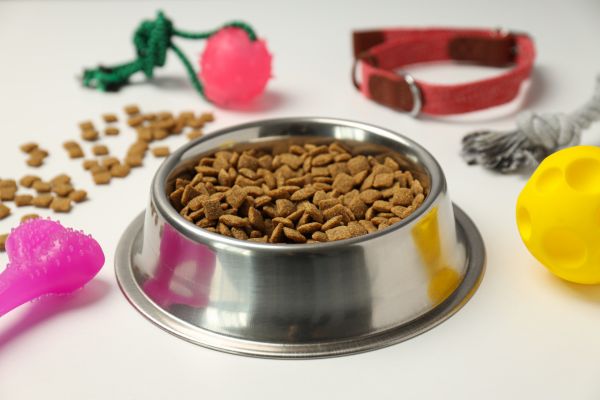Caring for a diabetic cat comes with its own set of challenges, especially when it comes to choosing the right food. Diet plays a crucial role in managing feline diabetes, helping to stabilize blood sugar levels and support your cat’s overall well-being. Understanding what makes the best food for diabetic cats can empower pet owners to make informed decisions that improve their furry friend’s quality of life. This guide explores everything you need to know about feeding a diabetic cat effectively.
Understanding Diabetes in Cats and Why Diet Matters
Diabetes mellitus in cats, often comparable to type 2 diabetes in humans, occurs when the pancreas does not produce enough insulin or when the body becomes resistant to it. This condition leads to elevated blood glucose levels, which, if unmanaged, can cause severe health complications. Nutrition becomes a critical factor because the wrong food can spike blood sugar, while the right diet can help regulate it.
The best food for diabetic cats is one that helps maintain stable glucose levels, promotes a healthy weight, and provides essential nutrients without unnecessary fillers or carbohydrates. Choosing such a diet requires an understanding of feline nutritional needs, particularly for diabetic cats.
Key Nutritional Considerations for Diabetic Cats
Cats are obligate carnivores, meaning their bodies are designed to thrive on a diet rich in animal protein. For diabetic cats, a high-protein, low-carbohydrate diet is often recommended by veterinarians. This type of food supports lean muscle mass while reducing glucose spikes after meals. Additionally, moisture content is important because wet food can help prevent dehydration and support kidney health, which is especially critical for diabetic felines.
It’s equally vital to avoid foods high in grains, starchy vegetables, and artificial additives. These ingredients can contribute to obesity and worsen diabetic symptoms. Instead, focus on diets with whole meat sources, minimal carbohydrates, and added nutrients like taurine, which is essential for heart and eye health in cats.
Wet Food vs. Dry Food: Which Is Better?
When selecting the best food for diabetic cats, pet owners often wonder whether to opt for wet or dry food. Generally, wet food is considered superior for diabetic cats because of its higher moisture content and lower carbohydrate levels. Canned food tends to mimic a cat’s natural diet more closely, providing the hydration and protein they need without excessive fillers.
Dry food, while convenient, can be problematic due to its higher carbohydrate content. However, some prescription dry foods designed specifically for diabetic cats offer lower carb levels and may be acceptable if wet food is not an option. Still, wet food remains the preferred choice in most cases, as it supports both diabetes management and urinary health.
Prescription Diets vs. Over-the-Counter Options
Veterinarians often recommend prescription diets formulated specifically for diabetic cats. These diets are crafted to control glucose levels and support overall health. While they can be more expensive, they offer peace of mind for many owners knowing the food meets medical standards.
On the other hand, high-quality over-the-counter options can also serve diabetic cats well. When considering non-prescription foods, carefully read labels to ensure they meet the necessary nutritional requirements. Avoid marketing gimmicks and focus on the ingredient list and guaranteed analysis for protein and carbohydrate content.
Transitioning to a Diabetic-Friendly Diet
Switching your cat’s food should be done gradually to prevent gastrointestinal upset. Start by mixing small amounts of the new food with their current diet, gradually increasing the proportion over seven to ten days. This slow transition allows your cat’s digestive system to adjust while ensuring they accept the new food.
Consistency is key when managing diabetes in cats. Feeding your cat at regular intervals and maintaining portion control helps keep blood sugar levels stable. Regular monitoring of your cat’s weight and glucose levels, in consultation with your veterinarian, will further support their dietary management.
Recognizing the Signs of Improvement
As you implement the best food for diabetic cats into your pet’s routine, you may notice positive changes. Signs of improved health include increased energy levels, better coat quality, and stabilized weight. More importantly, regular blood glucose monitoring may show more consistent readings, reducing the risk of diabetes-related complications.
It is crucial to continue working closely with your veterinarian throughout this process. Dietary adjustments, combined with medical treatment if necessary, can sometimes lead to diabetic remission, where insulin therapy is no longer required. However, this should always be assessed and supervised by a professional.
Conclusion: Giving Your Diabetic Cat the Best Chance
Choosing the best food for diabetic cats is one of the most impactful decisions you can make as a pet owner. A carefully selected diet rich in protein, low in carbohydrates, and full of moisture can help manage diabetes effectively and enhance your cat’s quality of life. Whether you opt for a prescription formula or a high-quality commercial option, the key is consistency and vigilance.
Always consult your veterinarian before making significant changes to your cat’s diet. Together, you can create a nutrition plan tailored to your cat’s specific needs, giving them the best chance at a happy and healthy life despite their diabetes diagnosis.



